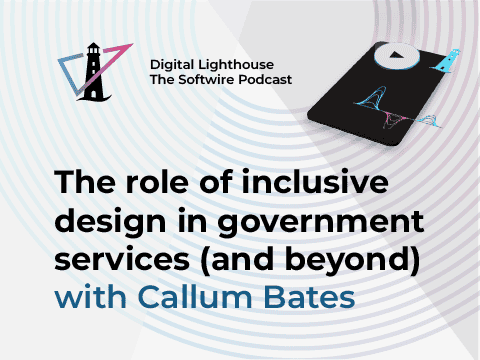
One of the best things about my job is how I get to speak to such a diverse range of businesses, public sector organisations and other technology companies on a daily basis. These conversations combine to give us some fascinating insights about the direction of travel across different sectors, and how technology can be harnessed to tackle the challenges organisations are facing.
So as you get back into the swing of things after the Christmas break, I thought I’d dust off Softwire’s digital crystal ball once more, to predict what we think the coming year holds for the tech world.
1. Uptick in practical AR and VR applications
We’ve all seen (and probably tried) virtual reality (VR) and augmented reality (AR). After the initial hype, with demo-ware that was often impressive but didn’t always have practical uses beyond gaming, we’re now seeing the growth of genuinely transformative real-world AR and VR applications. And we expect this to accelerate during 2020.
Affordable, high-quality VR headsets are now readily available, while nearly all of us carry AR-capable devices in our pockets.
Early practical examples include apps to visualise products in your home – from furniture to paint colours. Hold your phone up to some text and Google Translate overlays the same words in another language. Engineering companies are using VR to train their teams. And this is just the beginning.
Organisations’ drives to improve customer experiences, boost efficiency and operate more safely can all be supported through intelligent use of AR and VR. Expect to see an uptick in their practical applications through 2020.
2. Smaller tech organisations driving innovation in larger ones
The dominant, well-established players in every sector know they must innovate if they’re to protect or grow their market positions. And as we’ve written about before, medium-sized and large organisations have some unique strengths they can leverage to gain an edge over startups.
Much of the conversation around innovation in these bigger organisations centres on technology. But this is only part of the picture. To innovate successfully, many of these businesses and public sector bodies also need a shift in mindset and changes to ways of working. Only then can they fully embrace the opportunities new technology presents.
This is why, when larger organisations are looking for suppliers to support or deliver tech innovation programmes, we expect to see ever-greater demand for smaller, nimbler businesses to assist them. The bigger organisations will look to these companies to coach and mentor, as well as delivering the tech project.
This learning will drive the change needed to enable the larger organisation to innovate more effectively in the future.
3. Proliferation of new tech-driven finserv brands – but owned by the big players
The big brands in financial services have seen themselves increasingly squeezed by new players. Metro Bank shook up high street banking with its seven-day-per-week branch openings. More recently, the likes of Starling Bank and Monzo have achieved success with fully mobile offerings. Open banking will provide further opportunities for new players to enter this space.
In the face of this growing competition, we expect a two-pronged fightback from the established banks.
The first will see the big names buying up the successful disruptors and throwing their financial muscle behind them, but maintaining the distinct brands and offerings of their acquisitions.
In parallel, we expect big banks to launch more startup-like tech businesses of their own, with separate brands and product offerings. These new players will consequently have both the fresh, innovative feeling of a startup, and access to the expertise and financial firepower of the parent firm.
4. Greater investment in ‘tech for good’ by commercial organisations
A lot of technology-related investment is driven by consumer interests and behaviour. So with the huge current desire for products and services that are ethical, environmentally sustainable, or that directly tackle issues such as climate change, 2020 will see an increase in the use of technology for impact, rather than purely profit.
Related to this will be a further shift away from the old ‘profit above all else’ mentality in tech businesses. We’re seeing growing numbers of organisations using additional metrics to measure success, including around social impact and employee happiness.
We explored the role technology can play in global sustainability in a recent Softwire Techtalks podcast.
5. A move to API-first design
As a company of software developers, we couldn’t resist throwing in a final trend that’s right at the heart of what we do.
Application programming interfaces (APIs) make it straightforward to connect different systems – or different parts of the same system – together. In themselves, of course, they’re nothing new.
But in the past, products and services tended to be built in isolation, or with only very specific connectivity in mind. That’s all changing, driven by the broader trend of increased linkage between the many electronic devices in our homes, cars, workplaces and cities.
To facilitate this, the default position of any organisation developing a product or service will be that it will one day be built upon, or integrated into something bigger. This means adopting API-first development strategies, to ensure products and services can thrive in the ever-more-connected world.
What do you think?
Let us know if you agree with our predictions, and also what other trends you think 2020 will bring.
Here’s to a successful, prosperous and impactful year for your organisation!


